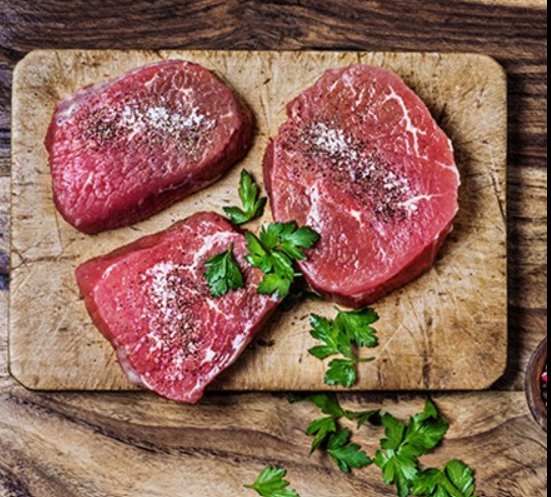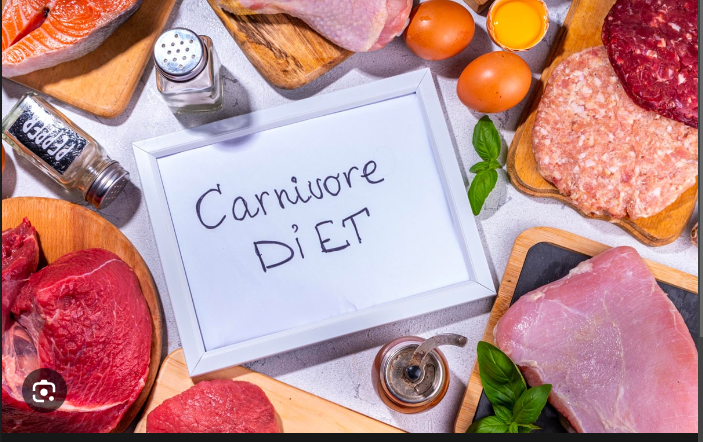The carnivore diet emphasizes meat and calls for the exclusive consumption of animal byproducts. Find out what professionals have to say about its advantages, hazards, and what you should know before doing it.
The majority of dietitians advise consuming a variety of foods from different dietary groups, with a focus on vegetables. However, some contend that sticking to one food group may be healthier than including all of them.
The carnivore diet is a meat-lovers’ diet that includes only animal items. Zero carbs are permitted, unlike other high-protein, low-carb diets.
Dietitians and medical professionals claim the craze is harmful and restricted, yet adherents are unrelenting in their excitement for the strategy. What you should know is as follows:
What is the Carnivore Diet?

The carnivore diet is a “zero-carbohydrate diet and an extreme version of the keto diet,” according to Hollie Zammit, a registered dietitian with Orlando Health in Florida. Only animal products are allowed on this diet; no fruits, vegetables, processed meals, or other sources of protein, lipids, or carbohydrates are allowed.
According to registered dietitian Jamie Feit of Jamie Feit Nutrition LLC in New York City, there is no room for ambiguity or the addition of further food groups. “It’s basically eating eggs and bacon for breakfast, a steak for lunch, and a cheeseburger and bacon for dinner”—sans bun, mind you.
The carnivore diet is popular for a variety of reasons, including weight loss, dieting discipline, potential health advantages, and individual objectives. The diet’s proponents claim that it can aid in preventing or treating conditions like diabetes, obesity, and autoimmune illnesses. However, there are few studies that support these claims, and many dietitians condemn the strategy.
“I’ve had clients who’ve expressed interest in me around the carnivore diet, largely because they’ve seen notable people discuss it or it aligns with their interests or curiosities,” says Andy De Santis, a registered dietitian and published author in Toronto. The simplicity is also attractive to some, he adds.
“My overall view of the carnivore diet would have to be negative,” De Santis says. “It just omits too many important food groups. Keto is one thing, but the carnivore diet is so limiting that I don’t see its long-term viability for practical purposes or for health purposes.”
What Can You Eat on the Carnivore Diet?

The carnivore diet permits the consumption of all meat products. Really.
You must exclude all plant foods from your diet if you eat meat and want to attempt eating like a carnivore. Yes, I do. All carbohydrates must be avoided, including those found in fruits and vegetables.
Dieters are advised to consume any type of meat and animal products, including chicken, fish, eggs, and dairy items. This includes fatty portions of beef, lamb, pork, and organ meats. Some variations of the diet permit the consumption of dairy products and other animal byproducts.
The carnivore diet will improve your protein consumption, but it comes with a price.
According to McMahon, “the only real health benefit that this dietary approach may produce is an effortless way to get enough protein daily.” The protein sources should be varied, though, and can be found in various foods, including Greek yogurt, beans, edamame, and almonds.
Zammit continues, “By gradually reducing intake of carbohydrates and plant-based food items and increasing intake of animal protein, the diet has some differences, even though it can be viewed as an extreme elimination diet.”
Zammit says that this is not an elimination diet, where dietary items may often be gradually reintroduced. “Intake of animal-based protein at 100% is the ultimate goal.”
Is the Carnivore Diet Safe?

Despite experts’ concerns, there are a growing number of ardent fans of the diet. It’s been endorsed by extreme athletes and celebrities like Joe Rogan. Saladino says going carnivore is the solution to a range of health issues currently plaguing humankind. Plants, he says, simply aren’t cutting it.
“If you look at the incidence of chronic disease, no one can deny that in the last 70 years, we’ve become abysmally unhealthy,” Saladino says. “The question is, what the heck happened?”
Saladino doesn’t connect poor health to unhealthy behaviors, which he claims have “gone way down” in recent years. Instead, he credits eating patterns—and what he says are misconceptions about healthy diets.
“If you look at the number of people who are eating ‘healthfully,’ that’s gone way up. But that’s just according to the U.S. dietary guidelines,” Saladino says.
He notes that red meat often bears the blame for many ailments and chronic diseases, which he thinks is backward. Plants, he says, can be more toxic and poisonous.
However, while some plants are toxic and poisonous, the ones that are deemed edible are not. The U.S. Department of Food and Agriculture regulates the safety of produce and other foods, along with the Food and Drug Administration and the Centers for Disease Control and Prevention. Further, studies have linked excess red meat consumption with increased risks of cardiovascular diseases and cancer.
In fact, there aren’t many studies in support of an all-meat eating pattern. And those that exist tend not to be robust or peer-reviewed.
Also read-Harnessing the Healing Power Of Harshingar Flowers: A Natural Remedy For Health
Images source-google




































